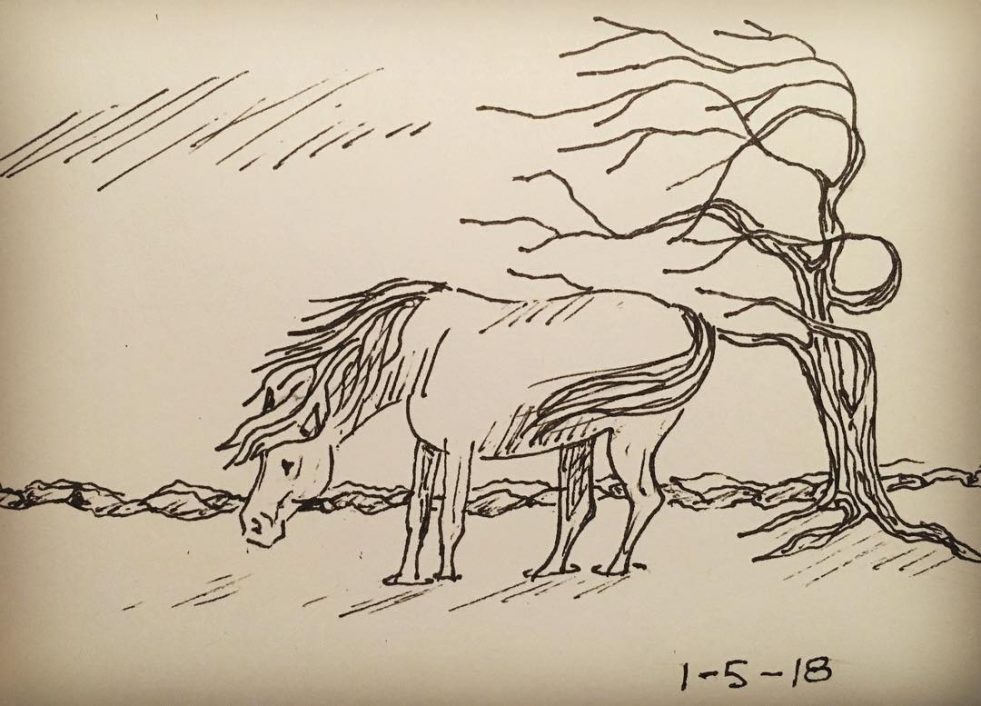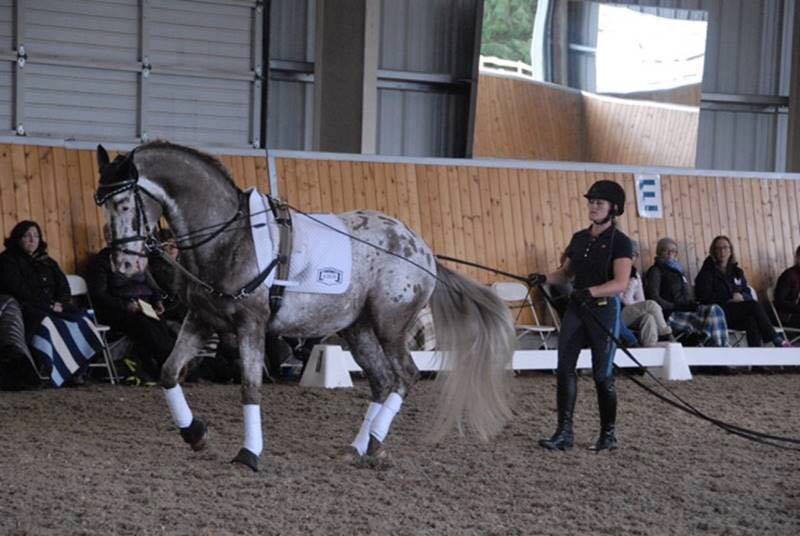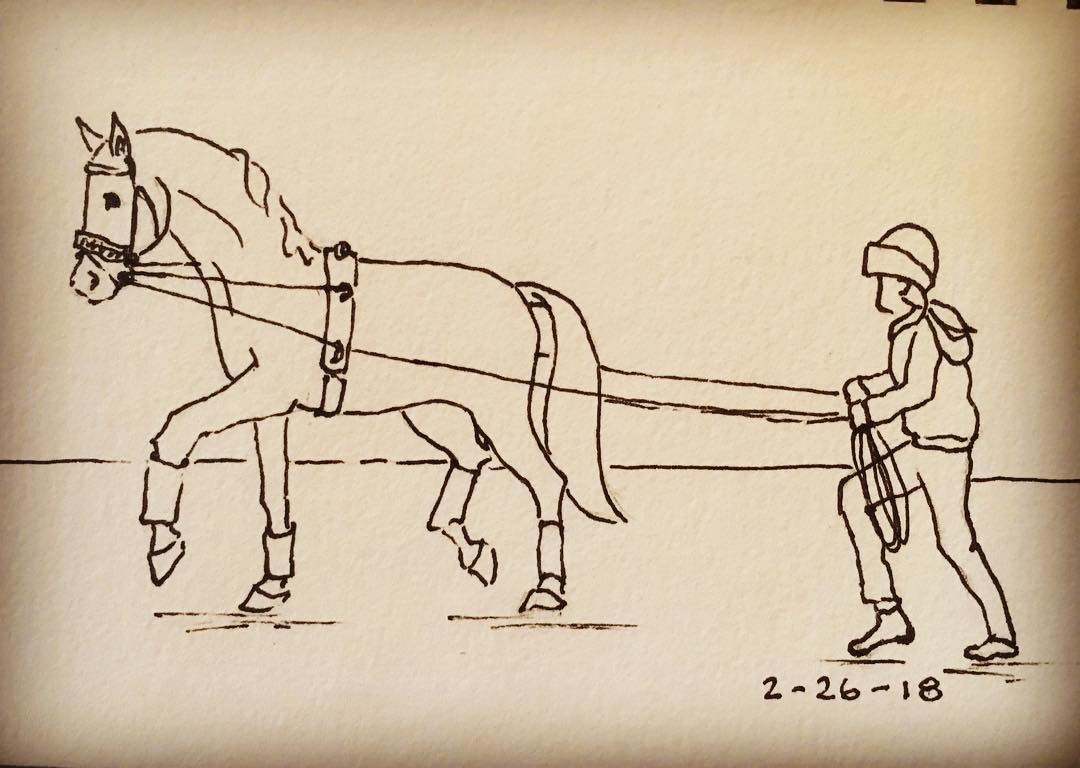
We backyard riders, trainers and general horse people of the Northeast deal with a lot in the winter. Sometime in November our outdoor arenas freeze over and we can no longer school our horses on a regular basis. If you’re serious about continuing your horse’s education through the winter months, and can afford the expense, you move to a barn with an indoor arena. You schlep there at least 6 days a week to get the most out of that steep board bill. You brave the coldest days, with handwarmers stuffed in your gloves and boots and multiple layers of blankets thrown on your horse. You pray that the snow isn’t sliding off the arena roof (which can be the most terrifying thing…) and you make sure your ice cleats are securely attached to your boots lest you wipe out in the parking lot.
Now you get to late February. The horses are starting to shed- a sure sign that warmer weather must be near. Yet the snow banks on the sides of the still icy roads make it hard to even go for a ride down a nice, quiet Vermont dirt road. So youcontinue to be stuck inside the arena. Horses get bored, trainers get bored. The walls start to close in. So you have to get creative.
Yesterday I pulled out my long lining equipment. From “Intelligent Horsemanship”: Long-lining- sometimes described as “riding from the ground”- is an incredibly useful, one might say essential, tool for the horse-trainer. Anything that can be done under saddle can also be done on long lines, including jumping, lateral work, high school movements, hacking on roads and tracks, and spookbusting.
 One advantage is that the horse isn’t having to contend with the rider’s weight, so it’s also great for youngsters in preparation for backing, and rehabilitating horses after an injury or saddle damage.
One advantage is that the horse isn’t having to contend with the rider’s weight, so it’s also great for youngsters in preparation for backing, and rehabilitating horses after an injury or saddle damage.
Sounds easy enough. Right? Well, it requires a degree of coordination that doesn’t come easily to me! When you’re sitting on a horse, you’re going with him and you can influence direction, speed, carriage, etc while the horse carries you along with him. When you’re long lining you have to keep up and magically “suggest” where you would like him to go and how fast you’d like him to go there. If you pull to hard the horse gets confused, may tuck it’s head into its chest and run, or choose to stop and stare at you. “Huh?” It shows you very quickly how much influence the rest of your body has on the horse when you’re riding; when you’re on the ground all you’ve got is two reins, your voice and some body language working for you.
Kate taught me a lot yesterday. After about a half an hour we were able to trot nice circles in both directions. But if you had seen the journey to get there… fumbling reins, Kate kicking out at the outside rein touching her bum, and the added joy of snow sliding off the roof to add “impulsion” when least expected… you’d appreciated the relative organization and cooperation we were able to muster.
I think I’ll add this to my weekly repertoire of training objectives, at least until the weather breaks and we can go outside to play!

